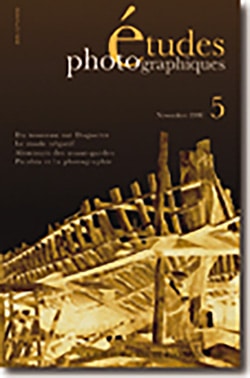 Man Ray, "the man with the head of a magic lantern", would probably not have liked the exhibition at the Center Georges Pompidou, entitled "Man Ray.
Man Ray, "the man with the head of a magic lantern", would probably not have liked the exhibition at the Center Georges Pompidou, entitled "Man Ray.
Photography in reverse", nor the book that accompanies it. The two curators, Emmanuelle de L'Écotais and Alain Sayag redistribute the cards as Aragon tried to do in J'abats mon game, pulling the threads one by one that the author of “The Age of Light” and Photography Is Not Art had patiently woven.
They deconstruct not a myth, but the complex relationships that Man Ray had with photography and even more with the status of photographer. In his introduction, Alain Sayag recalls that the Center Georges Pompidou had already devoted two exhibitions to Man Ray.
The donation of 12,000 negatives, supplemented by a donation of 1,500 photos belonging to Lucien Treillard, legitimizes a new approach to the work, a caustic confrontation between Man Ray's words and what the collection reveals.
We could elaborate on the title of the three parts which articulate the subject: "Duplicate the real", "Demarcate the real", "Distort the real", but this would be to get lost in subordinate considerations with regard to the interest of the thesis developed and better explained in the subtitles: "the profession of photographer", "the photographic invention".
Yes, Man Ray is a true creator, most often innovative, never encumbered by technique. But the dilettante worked hard and used all the tricks of the trade with such aplomb that he misused them.
Behind the jubilant power ("Man Ray, n. masc, synon. of joy, to play, to enjoy"), behind the artistic posture, the man has more than one trick up his sleeve: this is what underlines effectively the authors. With "How I became Man Ray. The photographer at work", Michel Frizot highlights some basic truths that have been obscured by both Man Ray and critics.
He recalls "the rustic cuisine of hypo and lenses" to which the nascent photographer is subjected, the emergence "as if secretly of a function of artist still undiscovered, novice and handyman in the shadow of a coveted status, in the meantime.” This is the crux of the problem.
A hard-working photographer glued to his studio, to his orders, this is possible neither for Man Ray nor for his clients.
In the context of his relations with the surrealists, faced with a pictorialist photography that was running out of steam, "Man Ray had no choice but to invent a style". Another obvious fact too forgotten, too masked by the system of exhibitions, the demands of the art market, recalled by Michel Frizot and developed by Emmanuelle de L'Écotais: "photographing for", linked to the notion of commission.
Man Ray photographer worked neither for galleries nor for museums (at least until the war) but for a market where the uses of photography are decompartmentalized, illustration suitable for multiple and varied recycling, where the back and forth between experimentation and commercial use are all springboards for breaking the rules.
